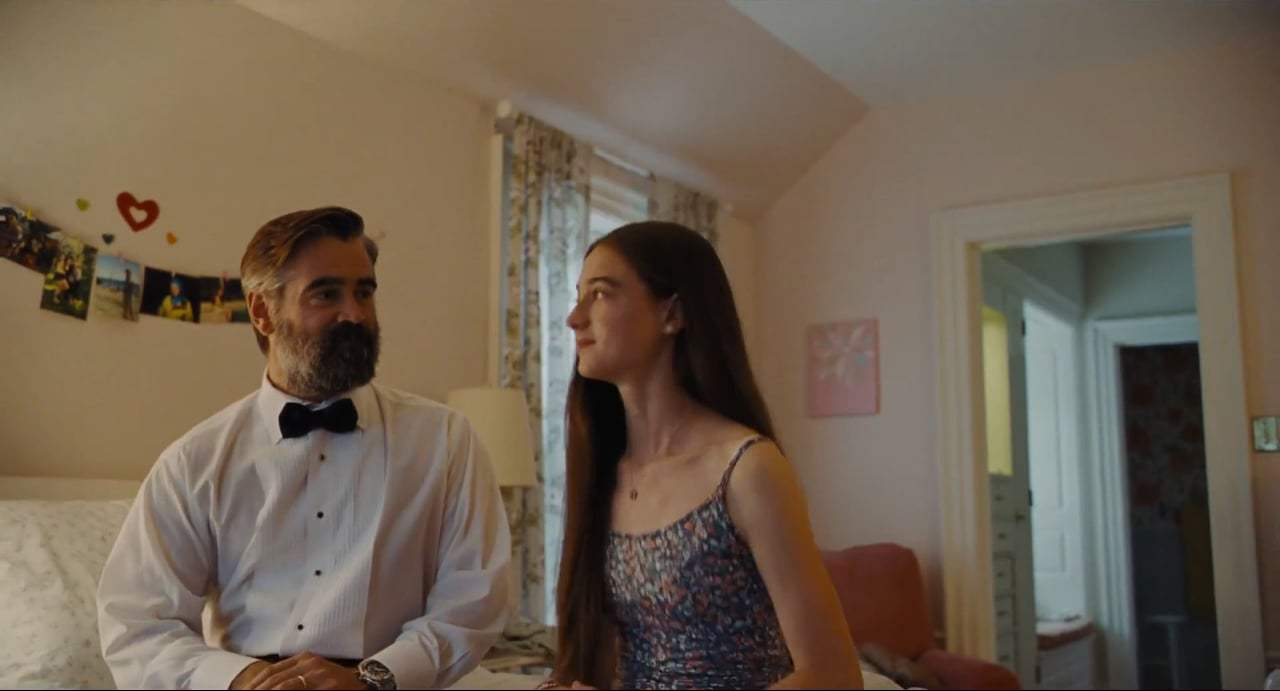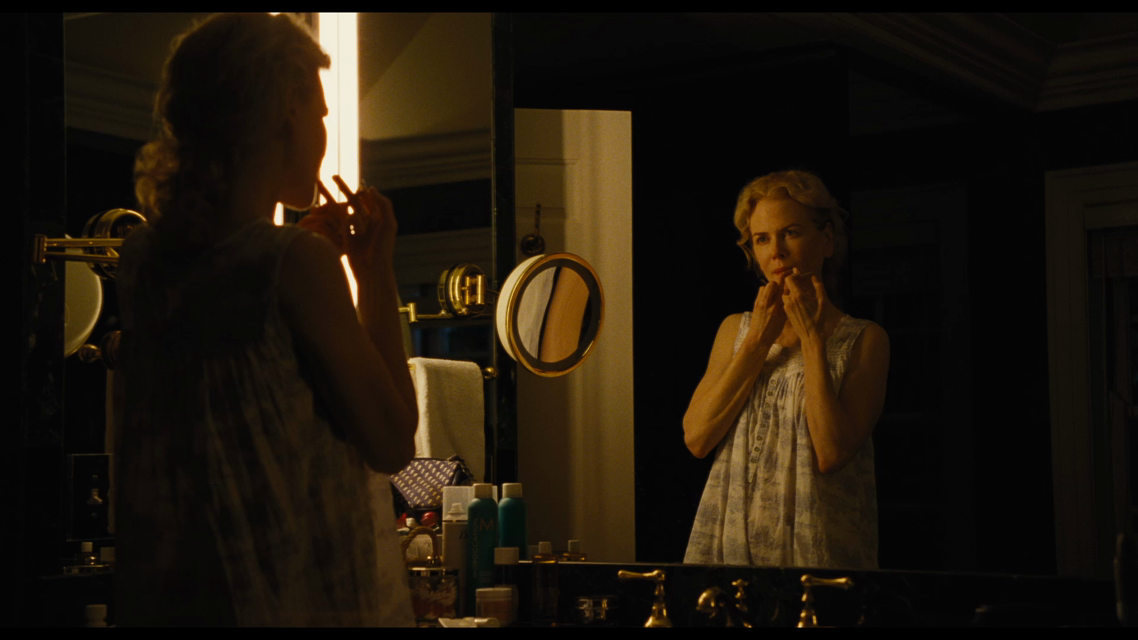If you want to leave a screening utterly dumbfounded, then I suggest you go and watch The Killing Of The Sacred Deer, Yorgos Lanthimos’ most recent project. Having completed the equally surreal 2015 film The Lobster, The Sacred Deer reunites the director with Colin Farrell, who once again takes a lead role, this time as Steven, an Irish surgeon with a seemingly perfect family: a beautiful wife, a daughter in the school choir, and a young son, Bob, a fan of punk and burgeoning into his rebellious phase. Steven also has a strange relationship with a boy named Martin (Barry Keoghan), whom we see Steven gift an expensive watch. We later find out that Martin is the son of one of Steven’s former patients, now deceased.
The Killing Of The Sacred Deer abandons Lanthimos’ absurdist take on the world and replaces it with something much more sinister. And as the film carries on, Steven’s relationship with Martin takes a horrifying turn, with Martin soon presenting himself as a terrifying and unstoppable threat to Steven’s family.
The Sacred Deer is a home invasion film on a grand scale, encompassing the protagonist’s entire world. It’s also a deeply uncomfortable trudge towards fate. With the outcome firmly cemented we witness a descent into madness, a futile attempt by the character to grasp control of the situation. Every time Steven, or wife Anna (played by Nicole Kidman) embark on a seemingly natural, and narratively typical journey to find a solution to prevent their impending doom, it ends fruitlessly – we discover nothing new.

The film is unnerving to its very core, one of the most uncomfortable experiences I’ve had in a cinema for a long while (this isn’t a criticism, however). Lanthimos is masterful in his execution; the script is overly descriptive, leading to discourse between characters coming across as forcibly more intimate. Dialogue is disconcertingly unnatural, and lines are delivered by the entire cast in a fantastically deadpan manner. Just as Lanthimos had planned: nothing feels right.
Camera work, too, is carefully constructed to unsettle. Everything is off-kilter, leaving the audience unsure as to where to focus. During scenes of interaction especially, viewing the characters off-balance delivered a voyeuristic quality, making me feel guilty for being intrigued. Throughout the entirety of the film I was constantly reminded of Stanley Kubrick’s The Shining, a plethora of crawling zooms lend a helping hand to Lanthimos’ homage to Kubrick’s 1980 film, and the overall unnerving nature of The Sacred Deer. Shots lingered ever so slightly too long, providing both a pervasive level of observation but also a profoundly disturbing open-endedness to the film. Tight editing gave us somehow, at the same time, a brief but prolonged look into how the characters are trying to find any sort of understanding of the circumstances, and how they could possibly change fate. One important overhead shot solidifies the fact that they cannot.
More elegantly portrayed here, but not dissimilar to the 2009 film The Box, the wheels of fate are set in motion. This is a film about lack of control; a pondering on the nature of unavoidable tragedies in a deterministic existence, and the pre-conditions and events humans cause to occur.
An even more glaringly obviously nod to The Shining is the stalking Steadicam shots, following the characters like ghosts perpetually haunting their chosen troubled family. The environment and locations seemed to take a back seat in The Sacred Deer: establishing shots are non-existent, and the doctor’s house is never viewed from the same angle, never allowing the audience to settle in and familiarise themselves with anything in the world. Thus we’re left not being sure about anything. At all. The Killing Of The Sacred Deer continues its theme of helplessness, and the irrational nature of the human psyche, through having events determined by an ultimately malicious and unwaveringly selfish and committed force with a scene that evoked strong memories of Michael Haneke’s Funny Games.

The score elevates the already intensely uncomfortable visual techniques with an intrusive and at times nerve-tingling array of disjointed and overwhelming clashing of instruments, akin to the soundtrack of a taut psychological horror. The score seemed to always be at a crescendo, burrowing its way under the skin and forcing the audience to beg for a moment of respite.
At moments I thought I knew where this film was heading, or what it was about. But as soon as I started to feel sure of my deductions, The Killing Of A Sacred Deer performs a 180 by snapping its own neck around and walking backwards. The film is full of illogical choices by the protagonists, strange remarks and interactions, a powerful mix of acutely uncomfortable imagery and sound, and a thematic core that keeps me debating internally to this day. This may sound silly but I still can’t decide if Martin was real, or a representation of something in corporeal form. I am clutching at straws, perhaps. See Yorgos Lanthimos’ bewildering The Killing Of A Sacred Deer for yourself and if you’re anything like me, you’ll leave feeling wholly confused but impressed in equal measure.
Qualitative Review
Yorgos Lanthimos masterfully executes another surreal tale. A film full of carefully curated homages and debate-worthy imagery and discourse. The Killing Of A Sacred Deer is a triumph, albeit an acquired taste. Regardless, it presents an open ended story that will guarantee to provoke questions and deliberation long after the closing credits have run.
Qualitative Review
Yorgos Lanthimos masterfully executes another surreal tale. A film full of carefully curated homages and debate-worthy imagery and discourse. The Killing Of A Sacred Deer is a triumph, albeit an acquired taste. Regardless, it presents an open ended story that will guarantee to provoke questions and deliberation long after the closing credits have run.




